Strength Training, Outdoor Fitness
Beach Body HIIT: Sculpt And Tone With Outdoor Workouts For Summer

The Popularity of HIIT and Outdoor Workouts During Summer
Summer is a season that prompts us to get outside and stay active. With longer days, warmer weather, and more opportunities to be outdoors, it’s no wonder that fitness enthusiasts look forward to summer as an opportunity to take their workouts outside.
High-intensity interval training (HIIT) has been gaining popularity in recent years, thanks in part to its ability to produce results quickly. HIIT workouts typically involve short bursts of intense exercise alternated with periods of rest or low-intensity exercise.
This makes them a great fit for outdoor workouts during summer. Outdoor workouts provide numerous benefits over indoor ones.
Exercising outdoors can boost your mood, reduce stress levels, improve cognitive function, and increase vitamin D levels from sunlight exposure. Additionally, outdoor terrain can add variety and challenge to your workout routine.
With these benefits in mind, it’s clear how combining HIIT with outdoor workouts can result in a fun yet effective way of achieving your fitness goals. The combination of high-intensity intervals and the added challenges presented by outdoor terrain makes for a workout that will burn calories while toning your muscles.
Table of Contents
Introducing Beach Body HIIT: Sculpt And Tone With Outdoor Workouts For Summer
When you think about summer fitness goals, the idea of having a “beach body” often comes up. While the term may sound superficial at first glance, having a beach body simply means feeling confident in your own skin while enjoying all that summer has to offer – whether that includes going swimming at the beach or putting on shorts and tank tops without feeling self-conscious.
In this article, we’re going to introduce you to Beach Body HIIT – an exciting way of sculpting and toning your body while enjoying the great outdoors during summer. We’ll show you how to take advantage of outdoor workouts and HIIT principles to help you achieve your fitness goals in a fun and effective way.
The following sections will cover everything you need to know about Beach Body HIIT, including its benefits, basic principles of HIIT, effective exercises for sculpting and toning your body, tips on maintaining proper form, incorporating cardio workouts into your routine, and helpful recovery tips. By the end of the article, you’ll be equipped with all the tools you need to make the most out of this exciting workout routine.
Benefits of Outdoor Workouts
Soak up the Sun and Fresh Air for a Mood Boost
Exercising outdoors is not only invigorating, but it can also have a positive impact on your mental health. When you’re outside, you get a dose of vitamin D from the sun which helps boost your mood.
Additionally, being surrounded by nature and breathing fresh air can reduce stress levels and increase relaxation. Outdoor workouts are also great for clearing your mind and improving focus.
Instead of being cooped up in a gym staring at walls or TV screens, you get to take in the sights and sounds around you. This sensory experience can be stimulating and rejuvenating for both your body and mind.
The Great Outdoors as Your Playground
Another perk to outdoor workouts is the variety of natural terrain available to incorporate into your routine. From hills to sand dunes to rocky shorelines, nature offers unique challenges that can enhance your workout intensity. For example, running on sand requires more effort than running on pavement because of the resistance it provides.
This extra challenge engages more muscles in your legs, glutes, and core leading to greater calorie burn. Similarly, incorporating uneven terrains like rocks or hills into exercises like lunges or squats can help improve balance while strengthening muscles throughout the body.
HIIT Goes Hand-in-Hand with Outdoor Workouts
High-intensity interval training (HIIT) is an effective workout method for building muscle while burning fat. By combining short bursts of intense exercise with brief periods of rest or active recovery, HIIT keeps the heart rate elevated leading to greater calorie burn even after the workout is over.
When done outdoors, HIIT workouts can be tailored with a variety of exercises that require little equipment such as jumping jacks or mountain climbers. This makes them ideal for those who want an effective workout without the need for expensive gym equipment.
Plus, being outside means you have more space to move around and get creative with your routine. For example, you can incorporate sprints or plyometric exercises like box jumps into your HIIT routine adding variety and excitement to your workout.
HIIT Basics
What is HIIT?
HIIT stands for High-Intensity Interval Training. It is a type of exercise that involves short bursts of intense exercise followed by periods of rest or low-intensity exercise. This type of training can be done with a variety of exercises, from running to weightlifting to bodyweight movements like jumping jacks and burpees.
How does HIIT work?
The high-intensity intervals in a HIIT workout help elevate your heart rate and increase your metabolism, leading to increased calorie burn during the workout and for hours afterward. The rest periods allow you to catch your breath and recover so you can push yourself hard again during the next interval.
Why is it effective for sculpting and toning?
HIIT workouts are effective for sculpting and toning because they target multiple muscle groups at once, while also providing cardiovascular benefits. The intense nature of the workouts means that you can burn fat and build muscle at the same time, leading to an overall leaner appearance. Additionally, because HIIT workouts require minimal equipment, they can be done anywhere, including at the beach.
How long should a typical HIIT workout last?
A typical HIIT workout should last between 20-30 minutes, including warm-up and cool-down periods. During this time frame, you should aim to complete 8-10 high-intensity intervals with rest periods in between. It’s important not to overdo it on high-intensity intervals as this could lead to injury or burnout over time.
Overall, HIIT workouts are an excellent choice for those looking to sculpt and tone their bodies while simultaneously improving their cardiovascular health. By incorporating these types of exercises into an outdoor Beach Body routine during the summer months, you’ll be able to take advantage of the beautiful weather while getting a great workout at the same time.

Beach Body Exercises
Sculpt and Tone with These Outdoor Workouts
Summer is the perfect time to take your exercise routine outdoors, and what better place to do it than at the beach? Not only does exercising on the sand add an extra challenge to your workout, but it also provides a stunning backdrop for your sweat session.
Here are some great exercises that will help sculpt and tone your beach body:
- Lunges: Lunges are a fantastic exercise for working your lower body, particularly your glutes, and quads.
- To perform a lunge, start by standing tall with your feet hip-width apart.
- Take a big step forward with one foot, bending both knees until you form two 90-degree angles.
- Push back up to standing and repeat on the other side.
2. Squats: Squats are another excellent lower body exercise that targets multiple muscle groups.
- Stand with your feet shoulder-width apart and toes pointing forward.
- Lower down into a squat position by bending at the knees while keeping your back straight.
- Push back up to standing and repeat.
3. Burpees: Burpees are a full-body exercise that will get your heart rate up while also toning multiple muscle groups.
- Start in a standing position before dropping down into plank position by placing both hands on the ground in front of you and jumping both feet out behind you until you’re in a push-up position.
- Do one push-up before jumping both feet back towards your hands, then jump straight up into the air.
4. Jumps: Jumping exercises such as jump squats or box jumps can help improve explosive power while targeting leg muscles like quads, hamstrings, calves, as well as glutes.
These exercises can be combined into circuits or performed individually depending on fitness level or goals for an effective Beach HIIT workout routine that targets specific muscle groups.
Targeted Muscle Groups
Each of the exercises targets different muscle groups in the body. Lunges target the quadriceps, hamstrings, glutes, and calves. Squats work your glutes, quadriceps, hamstrings, and calves.
Burpees are a compound movement that targets your chest, arms, abs, and legs simultaneously. Jumps like squat jumps or box jumps focus on explosive power in the lower body by targeting the quads and glutes specifically.
Incorporating these exercises into your workout routine can help you get the beach body you want by building muscle strength while also burning calories along the way. Adding weights to some of these exercises can also increase their difficulty level for a more intense workout routine.
It’s important to maintain proper form during each exercise to avoid injury and maximize benefits. Before starting a new Beach HIIT workout routine consult with a fitness expert or personal trainer for tips on how to perform each exercise correctly.
Importance of Proper Form
Proper form is essential when it comes to any type of exercise, especially with high-intensity workouts like HIIT. Not only does it help to maximize the effectiveness of each movement, but it also reduces your risk of injury.
When you’re performing exercises like lunges or squats, it’s easy to fall into bad habits that can put unnecessary strain on your joints. But with a little bit of focus and attention, you can make sure that you’re performing each move correctly.
Emphasize the Importance
The importance of proper form cannot be overstated – injuries can be painful and set you back from your fitness goals. When attempting new moves or trying to increase the difficulty level, it’s vital that you first master the technique at a lower intensity before adding more reps or weight.
For example, if you’re doing lunges for the first time, start with your own body weight instead of holding dumbbells. Then as you become more comfortable with the movement and confident about keeping good form, gradually increase intensity.
Tips for Maintaining Good Form
One way to maintain good form is by engaging your core muscles throughout every exercise – these muscles serve as a stabilizer and support system for your spine and pelvis. Also, pay attention to how far out in front of your knee your foot lands during exercises like lunges or squats – avoid letting them extend too far forward as this can cause strain on your knee joint.
Another tip is to keep a neutral spine when performing any exercise – avoid arching or rounding your back as this puts unnecessary pressure on those areas.
A helpful trick to check if you have good posture is by imagining someone pulling up from the top of your head toward the ceiling. Slow down!
It’s easy to get caught up in wanting to complete more repetitions faster, but that can often lead to sloppier form. Take the time to ensure each movement is done correctly – it’s better to do a few repetitions with perfect form than many repetitions with incorrect form.
Incorporating Proper Form into Your Routine
Make a conscious effort to think about the proper form for each movement during your workout. Consider working with a personal trainer or watching online instructional videos to help master the correct technique.
It may take some extra time and effort in the beginning, but the proper form will become second nature as you continue on your fitness journey. Not only will this help you avoid injuries, but it can also increase your confidence and make every rep more effective.

Incorporating Cardio into Your Routine
Go for a Run on the Beach
Running on the sand is a full-body workout that can give you amazing results. It’s harder than running on a flat surface, but it’s worth it. Running on the beach can help improve your balance and strengthen your muscles.
Plus, the scenery is beautiful and relaxing. Before starting your beach run, make sure to warm up by doing some dynamic stretching exercises.
Once you’re ready to go, start slow and gradually increase your speed. Aim for 20-30 minutes of running at a moderate intensity.
If you want to intensify your workout, try running in the water or uphill on the sand. Running in the water adds resistance to your muscles and helps burn more calories.
Swimming in the Ocean
Swimming is an excellent form of cardio that works out all major muscle groups while being a low impact on joints. Swimming in the ocean is even better because of its unpredictable currents which make it more challenging than swimming in a pool.
Start by warming up with some stretches before jumping into the water. Swim parallel to shore where you can stand up if needed – safety first!
The waves will add resistance to your swim which makes it an even better workout. You don’t have to do laps if that’s not your thing – just playing around in the waves can be fun and beneficial for endurance.
Cycling with Scenic Views
Cycling is another great way to get cardio exercise outdoors while enjoying scenic views! Whether you’re cycling along coastal routes or forest trails, there are plenty of beautiful places where you can ride! Before starting cycling, make sure that your bike fits properly and wear comfortable clothes suitable for exercise as well as protective gear like helmets.
With cycling, it’s important not only to work hard but also to enjoy yourself. Find a route that inspires and motivates you, so that you can maintain endurance for the entire ride.
Jump Rope on the Sand
Jumping rope is an excellent cardio exercise that strengthens your legs and improves coordination. Doing it on the sand adds an extra challenge as it requires more balance.
To get started, make sure to find a flat area of sand and warm up with some light stretching exercises. Then, begin jumping rope at your own pace and gradually increase your speed.
It’s essential to keep good form while jumping rope. Keep your elbows close to your body, jump just high enough to clear the rope, and land softly on the balls of your feet.
Cardio Can Increase Calorie Burn & Boost Endurance
Incorporating cardio into a Beach Body HIIT routine can help burn more calories while increasing endurance levels. Cardio also helps improve overall health by strengthening the cardiovascular system which decreases the risk of heart disease and stroke.
Adding variety to workouts keeps things interesting! Try mixing up running or jumping rope with swimming or cycling for an enjoyable all-around workout routine that will give you great results!
Recovery Tips
Listen to Your Body
After an intense workout, it’s important to give your body time to recover and repair. This means listening to your body and taking rest days when needed.
If you’re feeling especially sore or fatigued after a Beach Body HIIT workout, take a day or two off before jumping back into your routine. This will help prevent injury and ensure that you’re able to give future workouts your all.
Fuel Up Properly
Your body needs proper nutrition to recover from an intense workout. Make sure you’re fueling up with healthy carbohydrates, lean protein, and plenty of water after each Beach Body HIIT session. This will help replenish glycogen stores, repair muscle tissue, and reduce inflammation.
Stretch It Out
Stretching is crucial for preventing injury and promoting recovery after a workout. After each Beach Body HIIT session, take some time to stretch out your muscles. Focus on areas that feel tight or sore, such as your quads, hamstrings, glutes, shoulders, and back.
Get Enough Sleep
Sleep is essential for overall health and fitness. Aim to get at least seven hours of sleep each night so that your body can properly recover from intense workouts like Beach Body HIIT sessions. Lack of sleep can increase inflammation in the body and hinder muscle recovery.
Conclusion
Beach Body HIIT workouts are the perfect way to sculpt and tone your body while enjoying the great outdoors during the summer months! Incorporating outdoor exercises into a high-intensity interval training routine allows for both physical and mental benefits: improved cardiovascular endurance while also reducing stress levels by being outside in nature.
Achieving optimal results without risking injury though requires proper form throughout these exercises along with incorporating cardio into the routine while still allowing for adequate recovery time. When all these factors are properly balanced, the benefits of Beach Body HIIT workouts can be truly remarkable.
By following the recovery tips outlined in this article, you’ll be able to maximize your results and enjoy all of the benefits that come with a regular Beach Body HIIT workout routine. So grab your sunscreen and head to the beach – it’s time to get that summer body you’ve been dreaming of!



